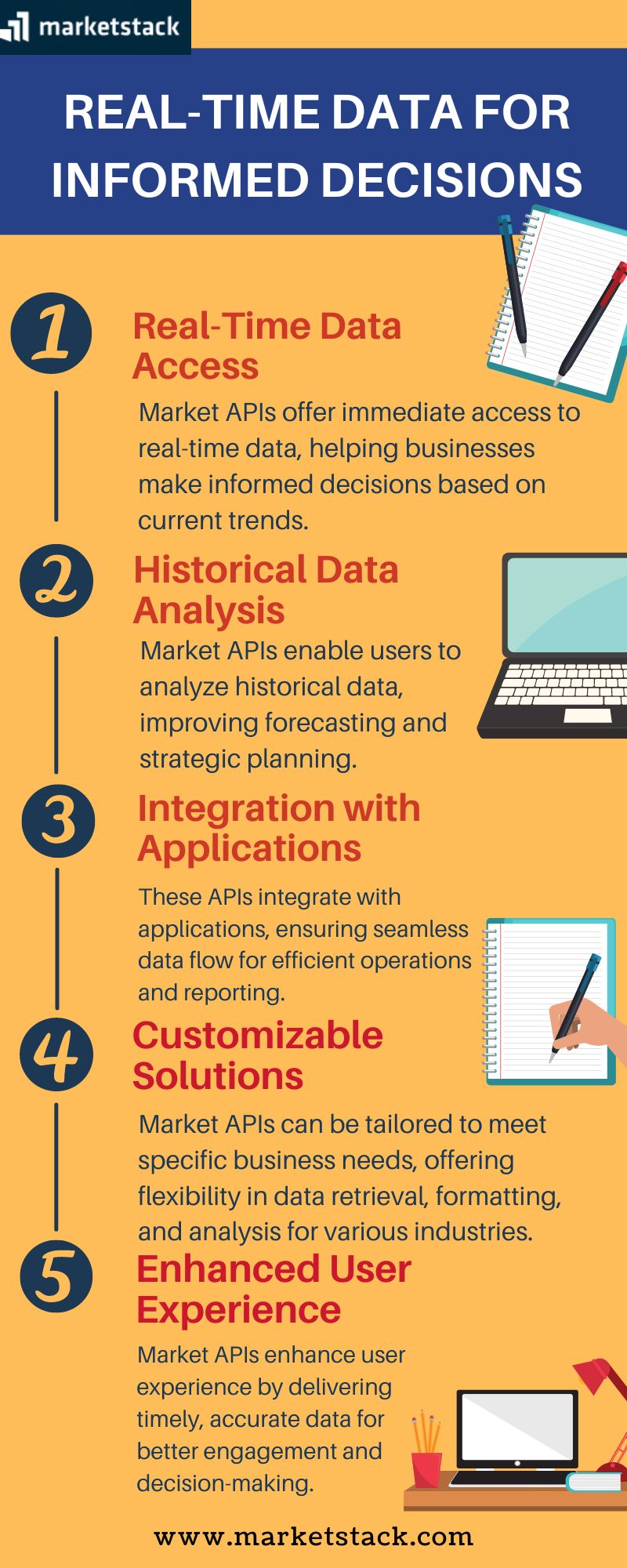How to Get Real-Time Stock Data: A Developer’s Approach

Introduction
Real-time data is essential for traders, investors, and developers. Developers building financial platforms or apps need to access real-time stock data to power their applications, provide up-to-the-minute quotes, and automate trading strategies.
Why Real-Time Stock Data Matters for Developers
Real-time stock data provides minute-by-minute updates, giving developers the ability to:
- Track market fluctuations in real-time.
- Build trading bots that execute trades based on the latest market conditions.
- Offer up-to-date insights to users on stock prices, volumes, and market movements.
For developers, integrating a Get real time stock data ensures their applications remain competitive and provide actionable information at any given moment.
Key Considerations When Choosing a Real-Time Stock Data API
Not all APIs offering real-time stock data are created equal. Here’s what developers should evaluate:
- Speed of Data Updates: How quickly does the API provide updates (millisecond vs second latency)?
- Latency: Low-latency APIs are critical for high-frequency trading (HFT).
- Market Coverage: Ensure the API covers the stock exchanges and securities your app requires.
- Security and Authentication: Ensure the API uses secure HTTPS connections and token-based authentication for secure data access.
Top Real-Time Stock Data APIs for Developers
Here’s a breakdown of some leading APIs for real-time stock data:
- Polygonio
Provides ultra-low latency data suitable for traders and financial platforms, supporting U.S. and global stock markets. - Tiingo
Offers real-time data for U.S. markets, with a focus on delivering fast and reliable stock prices. - Alpha Vantage
Free for real-time data with limited requests per minute, ideal for small applications or personal projects. - IEX Cloud
Real-time data for U.S. stocks, including live quotes and market metrics, with developer-friendly documentation.
How to Access Real-Time Stock Data Using APIs
Here’s a sample code for fetching real-time stock prices using Polygonio:
import requests
api_key = 'your_api_key'
symbol = 'AAPL'
url = f'https://api.polygon.io/v1/last/stocks/{symbol}?apiKey={api_key}'
response = requests.get(url)
data = response.json()
# Extract the real-time price
latest_price = data['last']['price']
print(f"Real-time price for {symbol}: {latest_price}")
Building Real-Time Dashboards: A Deeper Dive into Techniques and Tools
Developers looking to build real-time dashboards can create highly interactive and dynamic applications by using APIs to constantly update and display live data. In the case of financial applications, such dashboards are essential for tracking stock prices, monitoring market trends, and offering immediate insights to users. Below, we’ll expand on key techniques like WebSockets and polling, as well as explore relevant tools, frameworks, and best practices for building robust real-time dashboards.
Understanding Real-Time Dashboards
Real-time dashboards are web-based interfaces that dynamically update data as soon as new information becomes available. For financial applications, this often involves displaying live stock prices, trading volumes, or market trends in graphical or tabular form. Unlike static reports, real-time dashboards provide users with continuous updates, allowing them to respond quickly to market changes.
Key features of real-time dashboards include:
- Live data visualization (e.g., charts, tables, graphs).
- Automatic updates without needing to refresh the page.
- Interactive elements like filters, sort options, and drill-down capabilities.
Techniques for Building Real-Time Dashboards
1. Polling
Polling is a technique where the client (browser or app) periodically sends requests to the server to fetch updated data. It’s simple to implement but can become inefficient, especially when updates are required frequently.
How Polling Works:
- The client (browser) sends an HTTP request to the API at regular intervals.
- The server responds with updated data (e.g., the latest stock prices).
- The client updates the dashboard with the new data.
Polling Example: Here’s a simple JavaScript example using polling to update a stock price every 5 seconds:
function fetchStockPrice() {
fetch('https://api.example.com/stock-price/AAPL')
.then(response => response.json())
.then(data => {
document.getElementById('stock-price').innerText = data.latestPrice;
})
.catch(error => console.error('Error fetching stock price:', error));
}
// Polling every 5 seconds
setInterval(fetchStockPrice, 5000);
Advantages of Polling:
- Simple to implement.
- Works with any API that supports standard HTTP requests.
- Can be tuned to query at different intervals depending on data needs.
Disadvantages of Polling:
- Inefficient as it generates many unnecessary requests when no new data is available.
- Puts additional load on the server and the network.
- Doesn’t provide true “real-time” updates, as there’s always a delay based on the polling interval.
2. WebSocket
WebSocket provide a more efficient way to handle real-time updates. Unlike polling, where the client continuously requests data, WebSocket establish a persistent connection between the client and the server. This allows the server to push new data to the client as soon as it’s available, ensuring real-time updates with minimal latency.
Conclusion
By leveraging real-time stock data APIs, developers can create applications that deliver the latest financial data and power automated trading systems. APIs like Polygon.io and IEX Cloud offer the speed, reliability, and coverage necessary for today’s data-driven world.








